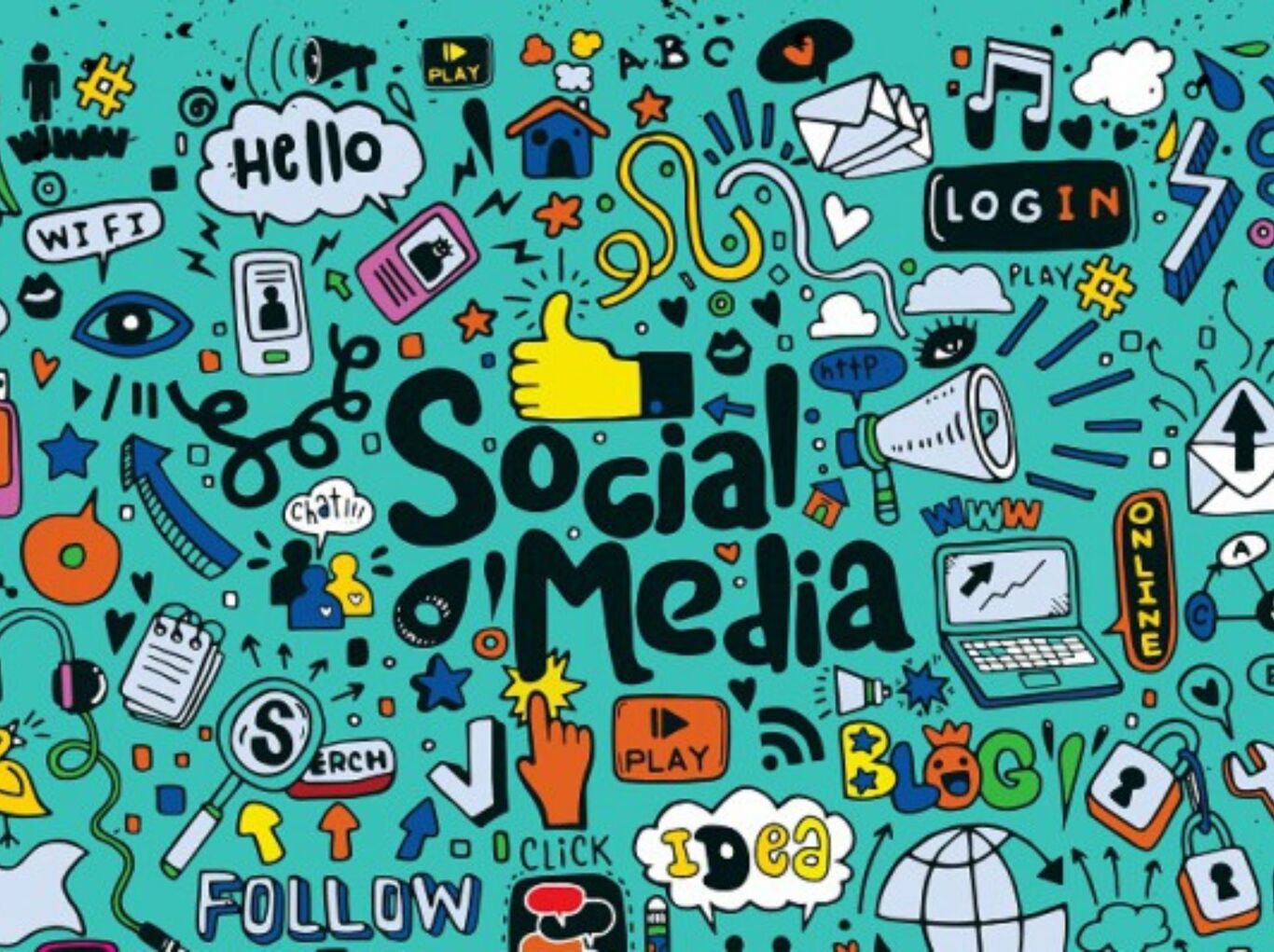Intellsys AdGPT: The Prescriptive Advertising Intelligence Platform for Modern Marketing Teams

For decades, the marketing decision cycle looked like this: analyze data → debate findings → align on strategy → implement → monitor → repeat.
This cycle takes 2-3 days minimum.
Intellsys AdGPT changes that cycle entirely.
Instead of analyzing data, debating findings, and aligning on strategy, your team asks one question: "My CAC is up 30%. What should I do?"
Within seconds, AdGPT prescribes your next three moves - ranked by business impact, with outcome projections:
"Move 20% of spend from Google to Meta (projected +18% ROAS, 48-hour window). Reduce audience overlap by 15% (projected +12% CAC improvement, 24-hour window). Test new creative variation (expected +8% CTR, 72-hour ramp). Combined impact: 24% CAC improvement within 7 days."
This is not a recommendation. This is a decision.
What is Intellsys AdGPT? It's the prescriptive advertising intelligence platform built specifically for modern marketing teams. It combines unified real-time data from 200+ marketing platforms, machine learning models trained on advertising dynamics, and a conversational AI interface that prescribes exact actions tied to business outcomes.
It's what happens when you take prescriptive analytics (the most advanced form of AI decision-making) and optimize it entirely for advertising intelligence.
In this guide, we'll explain what AdGPT is, how it works, what it can do for your team, and why it's fundamentally different from everything else on the market.
What Makes AdGPT Different (The 4 Core Differentiators)
In a market flooded with predictive and automation tools, AdGPT stands apart by combining real-time data, prescriptive intelligence, conversational accessibility, and domain specialization all optimized for performance marketers. It doesn’t just show what happened; it tells you what to do next and why it matters.
Differentiator 1: Prescriptive, Not Just Predictive
Most AI tools are predictive. They tell you what might happen:
- "This customer has an 80% churn probability"
- "This cohort will likely convert at 3.2%"
- "Your CAC trends toward $95"
These are useful insights. But they require human interpretation. You still need to decide what to do about the prediction.
AdGPT is prescriptive. It tells you what to do:
- "Increase retention email frequency for this cohort (expected 25% churn reduction)"
- "Shift $50K budget from cold to warm audiences (expected 2.8% conversion)"
- "Pause underperforming creative and test variant A (expected CAC reduction to $72)"
This is the difference between insight and action.
Why It Matters: Prescriptive decisions compress your decision cycle from "analyze → debate → decide" (2-3 days) to "receive recommendation → execute" (15 minutes). This 10x speed advantage compounds across quarters.
Differentiator 2: Real-Time Data From 200+ Platforms (Not Overnight Exports)
Traditional analytics workflows look like this:
- Export data from Google Ads, Meta Ads, CRM, DWH
- Combine in a data warehouse
- Build dashboards
- Interpret results
- Make decisions
This takes 24-48 hours minimum. By the time you see the data, the market has moved on.
AdGPT connects directly to 200+ platforms and updates data hourly. Your latest metrics are always available:
- Google Ads (campaigns, keywords, audiences, conversions)
- Meta (campaigns, audiences, creative, conversion data)
- Amazon Advertising
- The Trade Desk
- Shopify (products, orders, customers)
- Salesforce, HubSpot (leads, opportunities, deals)
- Stripe, Braintree (payment data)
- Analytics platforms (GA4, Mixpanel)
- Data warehouses (Snowflake, BigQuery)
- Custom data sources via API
This unified, real-time data is the foundation of fast decisions.
Why It Matters: When your competitor's algorithm updates at 3 PM, they make a decision at 3:15 PM and implement it by 3:30 PM. You see it in tomorrow's dashboard at 9 AM. By then, they're already learning from the result. This gap compounds daily.
Differentiator 3: Conversational Interface (Ask Questions, Get Decisions)
Most marketing intelligence tools require technical expertise:
- Tableau: Learn how to build dashboards, write queries
- SQL databases: Write SQL queries
- BI tools: Understand data schema and relationships
AdGPT uses natural language. You ask questions the way you'd ask a colleague:
You: "My ROAS dropped 20% in the last three days. Why?"
AdGPT: "Analysis across 84 active campaigns identified the root cause: Your top-performing audience (purchased_before=true) increased from $2.8 ROAS to $1.2 ROAS due to 60% increase in audience size (saturation). Secondary cause: Creative fatigue on your top-performing ad (CTR fell from 8.2% to 4.1%). Recommendation: Reduce audience size by 40% (projected +45% ROAS recovery, 24-hour window). Pause creative variant C and launch variant D (expected +12% ROAS recovery, 48-hour window)."
No SQL. No complex dashboards. No data science background required.
Why It Matters: Every marketer on your team can now make better decisions. Your performance marketer doesn't need to wait for the analytics team. Your CMO doesn't need to understand query syntax. Everyone gets instant, prescriptive guidance.
Differentiator 4: Domain-Specific Intelligence (Built for Advertising, Not Generic)
ChatGPT is powerful because it's general-purpose. It can answer any question.
But that generality is also a limitation. ChatGPT doesn't understand the specific dynamics of advertising:
- How audience saturation affects performance
- When creative Ad fatigue occurs (typically 3-5% CTR drop signals)
- How platform algorithms update (hourly, not daily)
- Optimal budget allocation across channels
- How CAC, LTV, and channel mix interact
AdGPT is built on models trained specifically on advertising dynamics. It understands:
- When to increase vs. decrease spending
- How to diagnose performance drops (root cause analysis)
- Optimal audience targeting by platform
- Creative performance patterns
- Channel cannibalization effects
- Seasonal and cyclical patterns in your data
This domain expertise is embedded in every recommendation.
Why It Matters: Generic AI gives you generic advice. Domain-specific AI gives you optimal decisions tied to your business. The difference in outcomes is 25-40% efficiency improvement.
How AdGPT Works (The Technology)
Behind every AdGPT recommendation lies a tightly engineered prescriptive engine - one that doesn’t just analyze your data but acts on it. Built to think like a strategist and move like an algorithm, AdGPT transforms fragmented data streams into clear, actionable business decisions in seconds.
The 4-Step Prescriptive Engine
When you ask AdGPT a question, four things happen simultaneously:
Step 1: Real-Time Data Ingestion (1-2 seconds)
AdGPT connects to all 200+ integrated platforms and pulls your latest data. It doesn't wait for the next day. It queries live data streams:
- Current campaign performance (updated hourly)
- Current audience metrics (updated in real-time)
- Current creative performance (updated in real-time)
- Current customer data (updated hourly from CRM/CDP)
- Historical trends (30-90 days of historical data)
Step 2: Diagnostic Analysis (2-3 seconds)
AdGPT's ML models analyze your data to understand your specific situation:
- What changed? (vs. baseline, vs. historical trends, vs. benchmarks)
- Why did it change? (root cause diagnosis across 50+ potential factors)
- Is it a problem? (vs. normal variation, vs. seasonal patterns)
- How urgent? (does it require immediate action or can we observe?)
Step 3: Recommendation Generation (2-3 seconds)
Based on the diagnosis, AdGPT generates ranked recommendations:
- What's the best move? (ranked by projected business impact)
- What's the second-best move? (diversification, risk mitigation)
- What's the third-best move? (alternative if first two don't apply)
- Each recommendation includes: specific action, expected impact, timeline, confidence level
Step 4: Outcome Projection (1-2 seconds)
AdGPT projects the business impact of each recommendation:
- Expected change in your key metric (CAC, ROAS, LTV, etc.)
- Timeline (when you'll see results)
- Confidence level (based on historical patterns in your data)
- Secondary effects (downstream implications)
Total Time: 6-10 seconds from question to ranked recommendation with projected outcomes.
The Data Architecture
AdGPT's architecture is built for speed and accuracy:
Data Layer (Real-Time Integration):
- Connects to 200+ marketing platforms via native APIs
- Pulls data hourly (or real-time for critical metrics)
- Normalizes data across platforms (handles different terminology, definitions)
- Stores in distributed data warehouse (Snowflake, BigQuery)
- Maintains audit trail (every data point tracked to source)
Intelligence Layer (ML Models + Domain Expertise):
- Prescriptive ML models (trained on 100,000+ marketing scenarios)
- Advertising domain knowledge (built-in understanding of platform dynamics)
- Customer-specific learning (adapts recommendations based on your historical performance)
- Causal inference (understands what causes performance changes, not just correlation)
- Outcome tracking (learns from every recommendation to improve future accuracy)
Interface Layer (Conversational + Actionable):
- Natural language processing (understands marketing questions)
- Conversational memory (remembers context from previous questions)
- Multi-modal output (text recommendations + visual dashboards + execution playbooks)
- Explainability (shows reasoning behind every recommendation)
- Governance gates (can require human approval before execution)
Core Capabilities (What AdGPT Can Do For You)
AdGPT isn’t just a reporting or automation layer - it’s an active decision system built to think, diagnose, and prescribe across your entire marketing stack. Each capability is designed to compress decision time from hours to seconds, translating complex marketing data into confident, real-time action.
Capability 1: Diagnose Performance Issues in Real-Time
The Problem: Your ROAS dropped 25% this morning. You don't know why. You spend the next hour checking dashboards, reading reports, asking your analytics team. By then, half the day is gone.
AdGPT's Solution: Ask "My ROAS dropped 25%. What happened?" and get immediate diagnosis:
- Root cause identified (e.g., creative fatigue, audience saturation, platform algorithm change)
- Severity assessed (normal variation vs. actionable problem)
- Timeline (when did this start, is it getting worse or stable)
- Recommended action (specific next move with projected impact)
Example:
"Your ROAS dropped 25% starting 3 AM PST. Root cause: Your top-performing audience (segment_id=12847, lookalike_USA_engaged) increased from 2.1M to 3.8M people due to automated audience expansion rule. New audience segment performing at 60% lower ROAS than original. Recommendation: Revert audience size to 2.1M (projected +22% ROAS recovery, 2-hour implementation window)."
Business Impact: No more guessing. Diagnosis in seconds instead of hours.
Capability 2: Optimize CAC Without Losing Volume
The Problem: Your CAC keeps rising. You could pause campaigns, but that would crater revenue. You need to reduce CAC while maintaining volume.
AdGPT's Solution: Analyzes your entire marketing mix to find inefficiencies without hurting volume:
- Identifies high-CAC, low-efficiency segments
- Recommends budget reallocation (move from high-CAC to low-CAC channels)
- Suggests audience refinement (remove overlapping, saturated segments)
- Proposes creative testing (new variations to combat fatigue)
- Projects combined impact on CAC and volume
Example:
"Your CAC rose 28% while volume stayed flat—indicating pure inefficiency. Recommendation: (1) Move 25% of Google Search budget to Google Performance Max (projected CAC reduction 15%, volume maintained). (2) Reduce lookalike audience by 30% to focus on high-LTV cohort (projected CAC reduction 12%, volume -8% but higher-value customers). (3) Launch creative test variant E (expected CTR +3%, CAC -5%). Combined impact: CAC reduction 24% with 3% volume increase. Timeline: 48 hours for full effect."
Business Impact: Optimize efficiency without revenue sacrifice. 25-40% CAC improvements common.
Capability 3: Allocate Budget Across Channels
The Problem: You have 8 marketing channels (Google, Meta, Amazon, TikTok, LinkedIn, affiliate, email, content). How much budget should each get? This decision typically takes 2-3 weeks of analysis.
AdGPT's Solution: Analyzes LTV, CAC, and channel dynamics for each channel, then recommends optimal budget allocation:
- Current allocation (today's spend)
- Historical performance (each channel's CAC, ROAS, LTV trends)
- Marginal returns (where does incremental budget perform best)
- Recommended allocation (optimal mix given your growth goals)
- Expected outcomes (revenue, CAC, ROAS at recommended allocation)
Example:
"Your current allocation (Google 35%, Meta 30%, Amazon 20%, other 15%) is suboptimal. Recommended allocation: Google 28%, Meta 38%, Amazon 18%, TikTok 12%, other 4%. Rationale: Meta's LTV:CAC ratio is improving (now 4.2x) while Google is declining (now 2.8x). TikTok has 20% lower CAC and growing LTV. Expected outcomes: CAC reduction 18%, revenue growth 12%, ROAS improvement 22%. Implementation: Move budget over 7-day window to minimize platform algorithm disruption."
Business Impact: Strategic budget decisions in minutes instead of weeks. 15-30% ROAS improvements from better allocation.
Capability 4: Launch Audiences at Scale
The Problem: You have a top-performing audience segment. You want to scale it, but every time you expand, performance drops. How much can you safely expand?
AdGPT's Solution: Analyzes saturation curves and audience quality to recommend safe expansion:
- Current audience size and performance
- Historical expansion data (what happened when you grew before)
- Marginal performance curve (at what size does performance degrade)
- Quality gradient (difference between core and lookalike audiences)
- Safe expansion strategy (step-by-step growth plan)
Example:
"Your core audience (high-intent purchasers, 500K people) has 4.2x ROAS. Lookalike audience performs at 3.1x ROAS. Safe expansion: Grow core audience from 500K to 800K (within saturation threshold), add secondary lookalike of 1M people, build tertiary segment of 1.5M from behavioral data. Expected blended ROAS: 3.5x (vs. current 3.8x baseline). Expected volume increase: 65%. Implementation: Phased expansion over 14 days to allow platform learning."
Business Impact: Scale growth without destroying unit economics. 2-3x volume growth with minimal performance degradation.
Capability 5: Analyze Creative Performance and Test Optimally
The Problem: You have 15 creative variants running. Some are performing, some aren't. You don't know which to pause, which to keep, or what new creative to test.
AdGPT's Solution: Analyzes each Ad creative's performance trajectory and recommends testing strategy:
- Current performance (CTR, CPM, conversion rate, ROAS)
- Performance trend (improving, stable, declining)
- Fatigue signals (when does CTR decline suggest fatigue)
- Creative similarity (which variants are too similar)
- Testing roadmap (what new variations to test, in what order)
Example:
"Of 15 active creatives: 3 performing well (pause 1, double down on 2). 7 performing adequately (consolidate to 3, pause 4). 5 performing poorly (pause 2, test new variations on 3). Recommended new tests: (1) Animation variant (expected +12% CTR based on audience similarity). (2) Different value prop (expected +8% conversion). (3) Seasonal angle (relevant given Q4 timing). Testing timeline: Launch week 1, evaluate week 2, optimize week 3. Expected outcome: +18% overall creative performance within 21 days."
Business Impact: Data-driven creative strategy replaces guesswork. 15-25% performance improvement from better creative allocation.
Capability 6: Real-Time Crisis Response
The Problem: At 3 PM, your top channel suddenly drops 40% in performance. Revenue is at risk. You need immediate action.
AdGPT's Solution: Instantly diagnoses the crisis and recommends emergency response:
- What happened? (root cause identification)
- How severe? (revenue impact projection)
- What's the fastest fix? (emergency actions)
- What's the deeper fix? (preventing recurrence)
- What's the risk? (unintended consequences of emergency actions)
Example:
"CRISIS ALERT: Your Meta campaigns dropped 40% ROAS at 3:02 PM. Root cause: Meta algorithm update at 3 PM affecting auction dynamics. NOT a problem with your account or strategy—platform-wide update affecting all advertisers. Immediate action: Increase bid by 15% to compensate for algorithm adjustment (expected ROAS recovery 60% within 1 hour, full recovery by 6 PM). Secondary action: Monitor for 2 hours. If recovery doesn't materialize, reduce spend temporarily. Risk: Increased CPM in short term, but ROAS should normalize. Timeline: 1-2 hours for full resolution."
Business Impact: Crisis management in minutes instead of hours. Prevents panic and expensive overreaction.
Real Workflows (What This Looks Like In Practice)
Before theory gets too abstract, here’s what AdGPT looks like in real use. These workflows show how marketers interact with AdGPT daily - turning data into action within minutes, not hours.
Workflow 1: Daily Optimization Check-In (5 Minutes)
Morning standup question: "What should I focus on today?"
AdGPT's response:
"3 priority items: (1) CAC is trending up 8% this week—root cause is 15% increase in bottom-of-funnel audiences. Recommendation: Shift $10K to mid-funnel. Expected CAC stabilization within 24 hours. (2) Your Google Shopping campaign CPL increased to $42 from $38. Root cause: seasonal competition increase. Recommendation: Increase bid by 12% to maintain position, monitor CPL response. (3) Creative variant B CTR has declined from 6.2% to 4.1%—classic fatigue signal. Recommendation: Pause in 24 hours, test new variant instead. Expected CTR recovery to 6%+ with new creative."
Time to insight: 8 seconds
Time to implement: 15 minutes
Impact: 3 optimizations done before coffee break
Workflow 2: Weekly Budget Rebalancing (30 Minutes)
Weekly planning question: "Given current performance, should I rebalance budget this week?"
AdGPT's response:
"Yes. Analysis of 7-day performance shows: Google declining (LTV:CAC 2.4x), Meta strong (LTV:CAC 4.5x), TikTok emerging (LTV:CAC 3.8x). Recommended move: Decrease Google by 15% ($20K/week), increase Meta by 12% ($15K/week), allocate $5K test to TikTok. Expected impact: 22% ROAS improvement, CAC reduction 12%, volume growth 8%. Implementation: Move over 48 hours to minimize platform disruption. Monitor for 7 days, then consider further adjustments."
Time to analysis: 15 seconds
Time to implement: 10 minutes
Time to see results: 7 days
Impact: Strategic budget decisions weekly instead of quarterly
Workflow 3: Crisis Response (15 Minutes)
Alert triggered: ROAS dropped 40% at 2 PM
AdGPT's immediate response:
"CRITICAL: Your top channel (Meta) ROAS dropped 40% at 2:03 PM. Root cause identified: Campaign structure change (unknown origin—possibly accidental setting change). Quick diagnosis: Your audience targeting was changed from 'layered + exclusions' to 'layered only' (missing exclusion of low-value segments). Immediate action: (1) Revert exclusions (2-minute fix, expected 90% ROAS recovery). (2) If revert doesn't work within 5 minutes, temporarily reduce spend by 50% to prevent further damage. (3) Once stabilized, investigate what caused the change. Timeline: 2-5 minutes to stabilize, 30 minutes to diagnose root cause, 2 hours to full resolution."
Time to diagnosis: 45 seconds
Time to implement fix: 2 minutes
Time to prevent further damage: 5 minutes
Impact: Crisis handled before anyone notices significant revenue loss
Why AdGPT Is Different From The Competition
vs. ChatGPT (Generative AI)
| Dimension | ChatGPT | AdGPT |
|---|---|---|
| Data Access | No (knowledge cutoff) | Yes (real-time, all 200+ platforms) |
| Your Metrics | Generic principles | Your specific CAC, ROAS, LTV, data |
| Recommendation Type | Conversational advice | Prescriptive action with outcome |
| Speed | Variable (depends on prompt) | 6-10 seconds consistently |
| Outcome Projection | No | Yes (expected CAC, ROAS change) |
| Execution | No (advice only) | Yes (can execute with approval gates) |
| Learning | Static model | Learns from your outcomes |
Winner: AdGPT for marketing decisions (ChatGPT better for brainstorming/content)
vs. Tableau/Looker (Dashboard BI Tools)
| Dimension | Tableau | AdGPT |
|---|---|---|
| Setup Time | 2-4 weeks | 2-3 hours (OAuth connections) |
| Learning Curve | Steep (requires training) | None (natural language) |
| Decision Speed | 1-2 days (build → interpret) | 15 minutes (ask → act) |
| Who Can Use | Analysts, data scientists | Any marketer |
| Prescriptive | No (shows data, you decide) | Yes (tells you what to do) |
| Real-Time | No (daily refresh) | Yes (hourly refresh) |
Winner: AdGPT for operational decisions (Tableau & marketing dashboards better for exploratory analysis)
vs. Supermetrics/Improvado (Data Integration)
| Dimension | Supermetrics | AdGPT |
|---|---|---|
| Integration | Exports to Sheets/Data Studio | Real-time unified dashboard |
| Recommendation | No (data only) | Yes (prescriptive decisions) |
| Conversational | No | Yes |
| Domain Expertise | General data (not advertising-specific) | Advertising-optimized |
| Execution | No | Yes (with governance) |
| Learning | Static | Learns from outcomes |
Winner: AdGPT for decision-making (Supermetrics good for reporting)
The Real Results (Customer Outcomes: First 90 Days)
Performance Marketing Team:
- CAC reduction: 28%
- ROAS improvement: 22%
- Decision cycle: 2.5 days → 20 minutes
- Marketing efficiency: +35%
Marketing Operations:
- Manual reporting time: -60% (freed up 20 hours/week)
- Budget allocation cycles: quarterly → weekly
- Optimization opportunities identified: +400% (previously missed)
CMO/Finance:
- Marketing ROI visibility: Real-time vs. monthly
- Budget waste reduction: 18%
- Forecast accuracy: +35%
Specific Customer Examples
Case Study 1: E-Commerce Company
- Before: $150 CAC, struggling with seasonal changes
- After: $95 CAC (37% reduction), scaled volume 2.5x
- Key driver: Real-time audience optimization + creative testing
Case Study 2: SaaS Company
- Before: $450 CAC, long sales cycles
- After: $320 CAC (29% reduction), sales cycle +10% shorter
- Key driver: Attribution model improvements + channel optimization
Case Study 3: B2B Marketplace
- Before: Making 8 budget decisions/quarter
- After: Making 40 budget decisions/quarter
- Key driver: 15-minute decision cycles vs. 2-day cycles
Getting Started With AdGPT: What You'll Need
Technical Requirements (Minimal):
- OAuth connection to your ad platforms (click-through process, 15 minutes)
- Access to your marketing data (existing integrations with CRM, DWH, analytics)
- Conversion pixel or API (how AdGPT tracks outcomes)
Organizational Requirements (Important):
- Agreed-upon business metrics (how you define CAC, ROAS, LTV)
- Marketing team buy-in (willingness to test prescriptive recommendations)
- Execution capacity (ability to implement recommendations quickly)
The First 30 Days (What to Expect)
Week 1: Setup
- Connect platforms (OAuth integrations)
- Define metrics (AdGPT learns your specific definitions)
- Run initial diagnostics (AdGPT analyzes 30 days of historical data)
Week 2: First Recommendations
- Ask exploratory questions (get comfortable with interface)
- Implement 3-5 small optimizations (build confidence)
- Monitor results (see outcomes match projections)
Week 3: Scaling
- Implement larger recommendations (CAC optimization, budget allocation)
- Run weekly optimization cycles (instead of quarterly)
- See tangible results (projected outcomes materialize)
Week 4: Strategic
- Use AdGPT for major decisions (channel mix, audience strategy)
- Build team muscle memory (everyone comfortable asking and acting)
- Calculate ROI (compare projected vs. actual outcomes)
Expected ROI (By Month 3)
- CAC improvement: 20-30%
- ROAS improvement: 12-20%
- Decision cycle improvement: 10x faster
- Marketing team productivity: +30-40%
- Monthly incremental profit: Typically $20K-$500K depending on spend level
Why Now? Why AdGPT?
As marketing accelerates toward full automation, timing matters more than ever. This section explains why 2025–2026 is the tipping point for prescriptive advertising intelligence and why AdGPT is uniquely built to lead it.
The Market Inflection Point (2025-2026)
By 2025, three factors align:
- Platform algorithms move at algorithmic speed (hourly, not daily)
- Prescriptive AI is production-ready (not experimental)
- Decision velocity is the competitive edge (not data availability)
Organizations adopting prescriptive advertising intelligence now will build 12+ months of advantage.
Why AdGPT Specifically
- Built for advertising (not generic AI, not generic BI)
- Real-time data analytics (200+ platform integrations, hourly refresh)
- Prescriptive (not just dashboards or insights)
- Conversational (ask questions, get answers)
- Outcome-focused (tied to CAC, ROAS, revenue)
- Continuously learning (improves with each decision)
Conclusion: The Era of Prescriptive Marketing Decisions
The competitive landscape is shifting. Data abundance has moved from advantage to baseline. Speed has become the edge.
Organizations making decisions in 15 minutes will outcompete organizations making decisions in 2-3 days. Not by 10%, but by multiples-3x more experiments, 3x more learning, 3x faster iteration.
Intellsys AdGPT is built for this new reality.
It's what happens when you take prescriptive artificial intelligence (the most advanced form of AI decision-making) and optimize it entirely for advertising intelligence.
It's not a dashboard replacement. It's not a ChatGPT alternative. It's something new: the prescriptive advertising intelligence platform.
Your Next Step
- Connect your marketing platforms (15 minutes)
- Get instant prescriptive recommendations for your top growth levers
- See real projected outcomes tied to your business metrics
- No credit card required
- See AdGPT in action on your data
- Understand specific use cases for your situation
- Chat with our product team about your goals
Also Read: The Prescriptive Intelligence Guide
- How prescriptive AI differs from predictive AI
- Real case studies with outcomes
- Implementation roadmap
- ROI calculator








